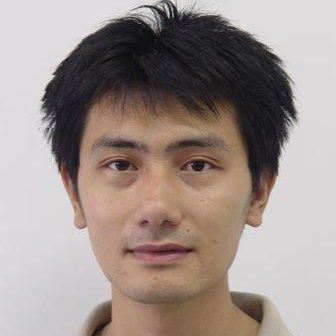Data-Driven Methods for Spatiotemporal Pattern Mining of Remote Sensing Images
A special issue of Remote Sensing (ISSN 2072-4292). This special issue belongs to the section "Engineering Remote Sensing".
Deadline for manuscript submissions: closed (31 August 2022) | Viewed by 16502
Special Issue Editors
Interests: explainable artificial intelligence; active deep learning; remote sensing image fusion
Special Issues, Collections and Topics in MDPI journals
Interests: intelligent processing of remote sensing big data; remote sensing data based Ready To Use (RTU) product; remote sensing information engineering and application
Special Issues, Collections and Topics in MDPI journals
Interests: electrical engineering; signal and image processing; systems and controls
Special Issue Information
Dear Colleagues,
With the fast development of remote sensing technology, simultaneous consideration of time and space characteristics has become one of the most effective ways to acquire information of the Earth's surface. Spatiotemporal patterns can be considered the change rules in a dynamic system. It is becoming progressively important with the increasing availability of large spatiotemporal datasets such as maps, satellite remote sensing, aerial remote sensing, and GPS trajectories. Mining valuable knowledge from spatiotemporal data is a fundamental problem in many remote sensing applications, including land cover change, ecological monitoring, smart transportation, city development, environmental protection, etc.
Traditional data mining techniques often perform poorly when applied to large spatiotemporal datasets because of their continuous and independent assumption. Furthermore, traditional data mining methods overly depend on handcraft feature engineering, especially for long-time sequence data or multi-source remote sensing images. Therefore, the performance of model-driven methods is limited in analyzing the complex characteristics of spatiotemporal data. In recent years, powerful computing, large training datasets, and advanced AI algorithms have achieved considerable development. With the prevalence of deep learning, data-driven methods are becoming the mainstream trend in spatiotemporal pattern-mining of remote sensing data. New architectures such as GNN, RNN, LSTM, and Transformer, among other, show promising performances in spatiotemporal pattern-mining. With automatic feature learning and powerful generalization ability, these data-driven methods make better use of the information of spatiotemporal data and provide both higher accuracy and reliability in data mining. Data-driven methods also provide new opportunities to understand the spatiotemporal pattern in many remote sensing applications.
With these issues in mind, it is time to present the current state-of-the-art theoretical, methodological, and application research on data-driven methods for spatiotemporal pattern-mining. This Special Issue invites articles that are related to the topic of remote sensing and geospatial big data analytics. We welcome high-quality contributions proposing solutions and approaches in the domain of, but not limited to, the following topics:
- New data-driven methods for spatiotemporal data, such as GNN, transformer, etc.;
- Spatiotemporal pattern-mining for forest, water, etc.;
- Spatiotemporal pattern-mining for environment and ecosystem features;
- Spatiotemporal pattern-mining for urban expansion;
- Change detection with remote sensing images;
- Spatial–temporal fusion of remote sensing images;
- Dynamical monitoring on marine ranching; and
- Image quality evaluation with spatiotemporal big data.
Dr. Peng Liu
Prof. Dr. Guojin He
Prof. Dr. Kie B. Eom
Prof. Dr. Mohd Anul Haq
Guest Editors
Manuscript Submission Information
Manuscripts should be submitted online at www.mdpi.com by registering and logging in to this website. Once you are registered, click here to go to the submission form. Manuscripts can be submitted until the deadline. All submissions that pass pre-check are peer-reviewed. Accepted papers will be published continuously in the journal (as soon as accepted) and will be listed together on the special issue website. Research articles, review articles as well as short communications are invited. For planned papers, a title and short abstract (about 100 words) can be sent to the Editorial Office for announcement on this website.
Submitted manuscripts should not have been published previously, nor be under consideration for publication elsewhere (except conference proceedings papers). All manuscripts are thoroughly refereed through a single-blind peer-review process. A guide for authors and other relevant information for submission of manuscripts is available on the Instructions for Authors page. Remote Sensing is an international peer-reviewed open access semimonthly journal published by MDPI.
Please visit the Instructions for Authors page before submitting a manuscript. The Article Processing Charge (APC) for publication in this open access journal is 2700 CHF (Swiss Francs). Submitted papers should be well formatted and use good English. Authors may use MDPI's English editing service prior to publication or during author revisions.
Keywords
- spatial–temporal fusion
- data-driven methods
- spatiotemporal big data
- dynamical monitoring
- environment and ecosystem








